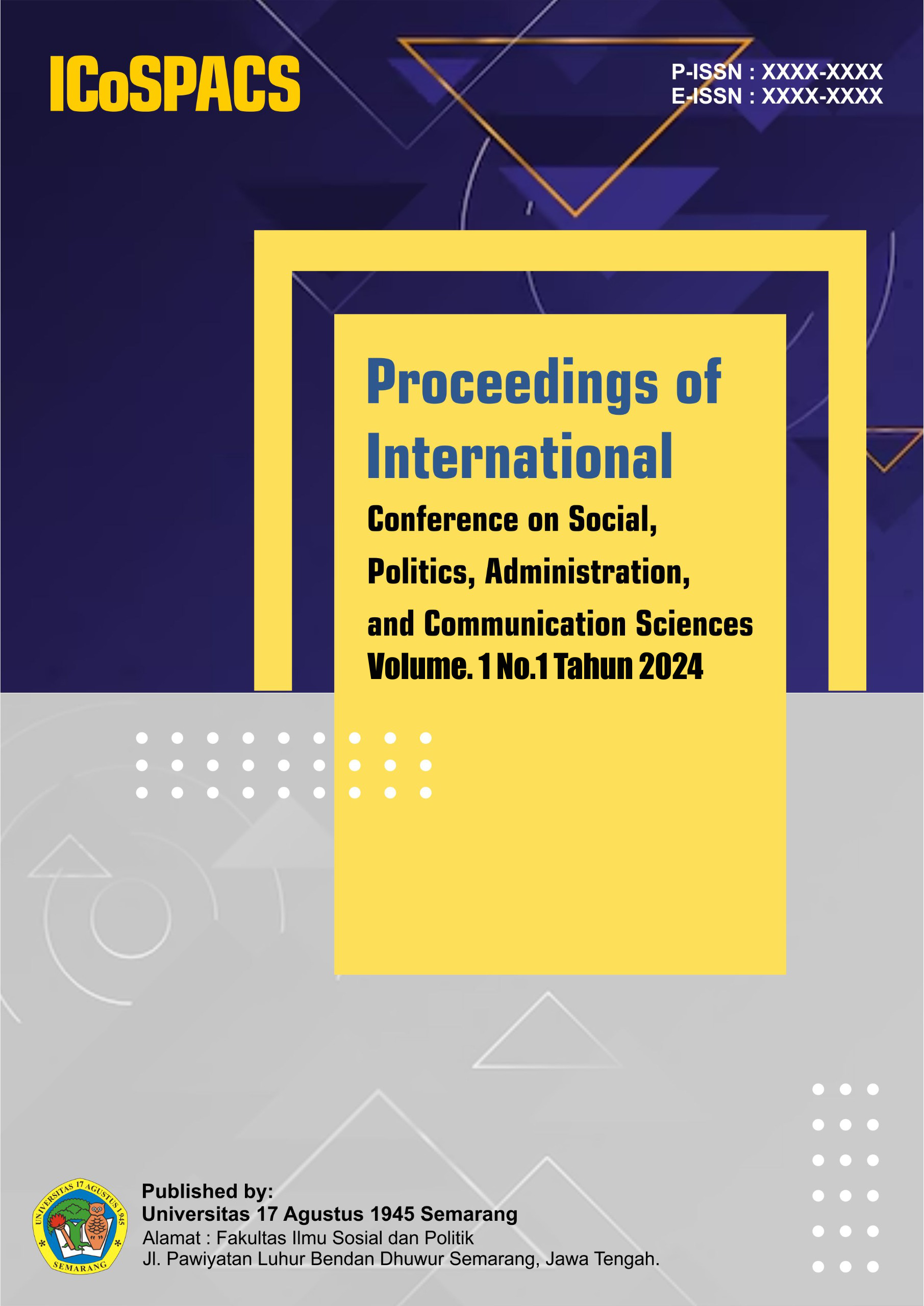The Trend of Coffee Brand Advertising Messages in Building Brand Reputation
(A Comparative Study of Nescafe and Good Day Advertising Messages)
Keywords:
Advertising, Brand, Consumer, ReputationAbstract
Advertising is one of the media frequently used in building brand reputation. Through advertising, companies can convey messages and reach their audience on a massive scale. Many companies compete to create attractive advertisements to capture the audience's attention and build a strong brand reputation. This includes brands like Nescafe and Good Day. As packaged coffee brands with a good reputation in the public eye, their success is certainly supported by the advertisements they produce. Based on this, the research focuses on a Comparative Study of the Trends in Advertising Messages of Nescafe and Good Day Coffee Brands in Building Brand Reputation. This study examines the advertising messages produced by the Nescafe and Good Day coffee brands. The study divides the advertising message approach into three categories: Product Driven (1.0), Customer Oriented (2.0), and Human-Centric (3.0). The research uses a quantitative content analysis method, observing the trends in advertising messages produced by Nescafe and Good Day coffee brands over the past 5 years in building brand reputation. The results show that Nescafe primarily uses a Customer-Oriented approach, where 60% of the advertisements produced between 2020-2024 emphasize consumer needs and preferences. Meanwhile, Good Day applies a more balanced approach between Product-Driven (50%) and Customer-Oriented (45%), with only a few advertisements using the Human-Centric approach (5%). This indicates that Nescafe focuses more on personal aspects and consumer experiences, whereas Good Day tends to blend product excellence with emotional experiences that engage consumers.
References
Baskoro, A. P. (2021). Analisa Efektifitas Iklan Media Televisi Menggunakan Epic Model Produk Kopi Good Day. Jurnal Pariwara, I(1), 29–40. https://jurnal.bsi.ac.id/index.php/pariwara
Damastuti, R. (2021). Membedah Feeds Instagram Produk Skincare Lokal (Analisis Isi Kuantitatif Akun Instagram Avoskin) Discovering Local Skincare Product Instagram Feeds (Quantitative Content Analysis Instagram Account Avoskin). Perspektif Komunikasi: Jurnal Ilmu Komunikasi Politik Dan Komunikasi Bisnis, 5(2), 189–199.
Dimyati, A. (2018). Manajemen Public Relations dan Reputasi Organisasi Lembaga Amil Zakat Dompet Dhuafa. Nyimak (Journal of Communication), 2(2), 167–185. https://doi.org/10.31000/nyimak.v2i2.860
Dwi Cahyani, A., & Aprilia, M. P. (2022). Kekerasan terhadap Perempuan dalam Film Indonesia (Analisis Isi Kuantitatif dalam Film Indonesia dengan Latar 1998-2021). Jurnal Mahasiswa Komunikasi Cantrik, 2(1), 1–14. https://doi.org/10.20885/cantrik.vol2.iss1.art1
Fadhila, M. A., & Damastuti, R. (2023). Fadhila - Gaya Ganjar -.pdf. Medialog: Jurnal Ilmu Komunikasi, VI(1).
Hisan, K., & Azhar, A. A. (2020). Trend Iklan Politik Luar Ruang Dalam Ruang Media Massa. Al-Hikmah Media Dakwah, Komunikasi, Sosial Dan Kebudayaan, 11(2), 80–84. https://doi.org/10.32505/hikmah.v11i2.2543
Madani, A., & Ambarwati, J. (2023). Subkultur Anak Muda Dalam Iklan Kopi Di Indonesia: Kajian Semiotika Roland Barthes. SEMIOTIKA: Jurnal Ilmu Sastra Dan Linguistik, 24(2), 212. https://doi.org/10.19184/semiotika.v24i2.31091
Prasetiyo, A. B. (2022). Gambaran Maskulinitas dalam Iklan Kopi Caffino di Instagram. Jurnal Communio : Jurnal Jurusan Ilmu Komunikasi, 11(1), 50–62. https://doi.org/10.35508/jikom.v11i1.5530
Saptiyono, A., Setya Watie, E. D., & Julianto, E. N. (2020). Analisis Isi Kuantitatif Berita Kegiatan Mahasiswa. Jurnal Dinamika Sosial Budaya, 22(2), 284. https://doi.org/10.26623/jdsb.v22i2.2566
Setiadi, T. (2023). Manajemen Corporate Image melalui Media Sosial: Studi Literatur tentang Citra Perusahaan dan Perkembangan Teknologi Media. Representamen, 9(01), 18–30. https://doi.org/10.30996/representamen.v9i01.8380
Setyawan, I. (2018). Analisis Efektivitas Iklan Televisi Kopi Instan Top Coffee Endorser ”Iwan Fals”. Manajemen Bisnis, 4(1), 39–49. https://doi.org/10.22219/jmb.v4i1.5279
Tasruddin, R. (2017). Tren Periklanan di Media Sosial. Jurnal Komodifikasi, 5(5), 15–20. http://journal.uin-alauddin.ac.id/index.php/Komodifikasi/article/view/5504#
Widuhung, S., & Sartika, R. (2022). Tren Penggunaan Endorser Pria Dalam Iklan Kecantikan. Jurnal Public Relations (J-PR), 3(1), 1–8. https://doi.org/10.31294/jpr.v3i1.1030
Zakiyyah, I., & Kurniawati, E. (2023). Peran Brand Ambassador Boyband BTS Pada Iklan Gofood Dalam Membangun Brand Awareness. Solusi, 21(4), 390. https://doi.org/10.26623/slsi.v21i4.7726
Zukhruf, M., Al Ayubi, F., & Sulistyowati, H. (2023). Kemenarikan Pemilihan Kata Pada Iklan Online Shop Aplikasi Shopee Analisis Wacana Persuasi. Journal on Education, 05(04), 17104–17114.




